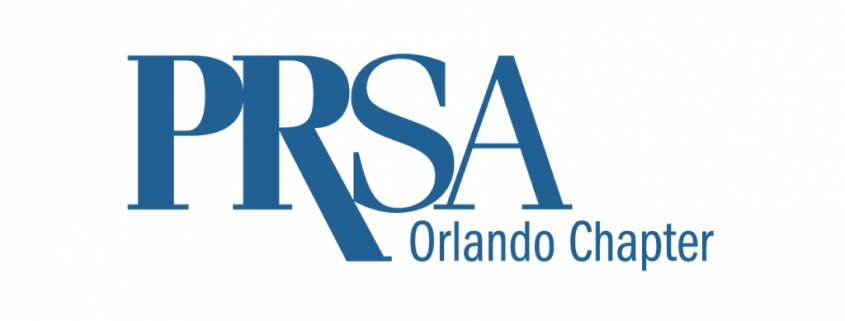Afternoon Coffee Break Idea Swap Recap

We held our second “Coffee Break Idea Swap” on Tuesday, May 12, 2020. We had nearly 20 members on the virtual meeting and discussed a variety of topics. Here’s a summary of what was covered.
Media Relations
Question: What advice do you have for explaining to the CEO that some stories are still media worthy during this COVID-19 era?
- The media is hungry for feel-good and community stories to counteract negative headlines. An example is the success Joe Culotta has had highlighting volunteers during this time with their virtual luminary campaign.
- Continue to use tried and true techniques—regular pitching works if it is timely.
- Newsrooms were already slim, but are now even more so. Remember to let your newsroom contacts know you understand their needs (and pain) and become a resource to help them better do their job. One way to do so is to pitch relevant topics or tailor your pitch to current issues.
- Keep in mind, many papers are furloughing or significantly reducing hours, so some reporters may not be working a regular schedule. Timeliness is key and have source availability ready when you pitch so you can schedule interviews on the spot.
- Because they are already stretched so thin, when you pitch a story to a journalist or broadcast outlet make sure to provide video and image assets.
- Monitor what is happening and build trust with your CEO (and external clients). “Be the umbilical cord for the client” and feed them the types of stories that are being covered and what types of stories would be appropriate for the corporation or client.
- When communicating during a crisis, you need to have options for different scenarios and situations because things change quickly, so don’t rely on one scenario and be ready to update your pitch based on the latest information.
- While email is still the preferred method for reaching journalists and many agree that it has been successful, social media is another tool to reach out to media contacts. Many are overwhelmed with email or aren’t getting calls to their office numbers, so social media is a great way to build a relationship with media contacts. One great tool is Twitter Messaging. Facebook Groups is another tool to look for building relationships with media contacts. Reporters are on social media as much as the rest of us and picking up their ideas there, too. One practitioner has had success reaching journalists through discussion threads on mommy groups and another posted content in three or four “farm to table” Facebook groups which popped up as a result of the media.
Webinar Marketing
Questions: What advice do practitioners have for marketing webinars to key audiences and charging for them? Rosen College is offering a webinar to alumni, but wondering if it makes sense to broaden the audience? What are others charging for webinars?
- Depending on the purpose of the webinar, if it is for retraining, then focusing on offering to alumni for free is an excellent benefit to alumni who may be in need right now. If it is meant for branding or lead generation, it might be good to open it up to a wider audience of potential students.
- Consider charging for non-alumni or non-members and consider giving discounts to target groups.
Working from Home Tips
- Block the bottom of glass doors so your dog doesn’t bark whenever somebody walks or drives by.
- When doing phone meetings, consider taking a walk. Some have found walking meetings very helpful.
- Take a break at lunch and get some fresh air!
- Don’t neglect your self-care. Work out, spend time with your family, eat well. Find your simple joys. It’s too easy to become “on” 24/7 right now, working before sun up and well past sundown… but don’t.
- Build in some discipline to leave your phone and computer behind after the work day, get enough sleep. Take care of yourself, go outside and walk with your dog.
- Be intentional about when to turn on and off; when your priorities aren’t in order everything suffers.
- Manage expectations of your family, bosses and clients. Be sure to let them all know when you are available… and when you aren’t. Set up some boundaries and let your colleague know that you will be unavailable after a certain time.
Job Search Support
- Check PRSA Orlando job board and PRSA National JobCenter.
- Keep networking.
- Stay as flexible as you can, if that means you sidestep into a job that isn’t QUITE PR, or take advantage of this time to update your resume, learn some new technology and fill in the blanks with things you haven’t had time to do.
- Consider writing some articles on LinkedIn to be top of mind. Recruiters are still very active on LinkedIn right now and your keywords will help their search.
- UCF is offering a few free basic classes right now – like “creating WordPress sites” that could help add to your skillset.
- Create a website and/or blog showcasing your work and writing.
Internal Communications/Transitioning Back to the Office
Question: How are others managing internal COVID-19 communications when we are getting mixed messages from political leaders and scientists? What does going back to work look like (provide face masks, hand sanitizer, what’s crossing the line)? And, we have to consider the environment where kids are not going back to school and don’t have access to summer camps…
- The biggest challenge is making sure our workspace is safe and avoid lawsuits in the future. When is or isn’t it safe to come back to work and can employees continue to work from home if they wish?
- Twitter announced they’re allowing their team members to work from home forever! Well, the employees that are able to do their jobs remotely. Which really helps with parents with kids who aren’t in school. Perhaps this will influence many other companies.
- Stefanie Macfarlane, who works with attorneys at RumbergerKirk, noted that there are protections for workers with health conditions and parents who lack childcare that those employees can be accommodated to work from home, or in cases where they cannot, qualify for unemployment, but if an employee refuses to go back to work because they are afraid, they may lose their job. According to Employment and Labor Attorney Linda Bond Edwards, “Most importantly, workplaces should pay particular attention to guidance from the U.S. Equal Employment Opportunity Commission (EEOC), Department of Labor and Occupational Safety and Health Administration (OSHA) and other entities that regulate workplace issues. The EEOC has prepared a question and answer document (“What You Should Know About COVID-19 and the ADA, the Rehabilitation Act, and Other EEO Laws”) that answers most employer questions.


